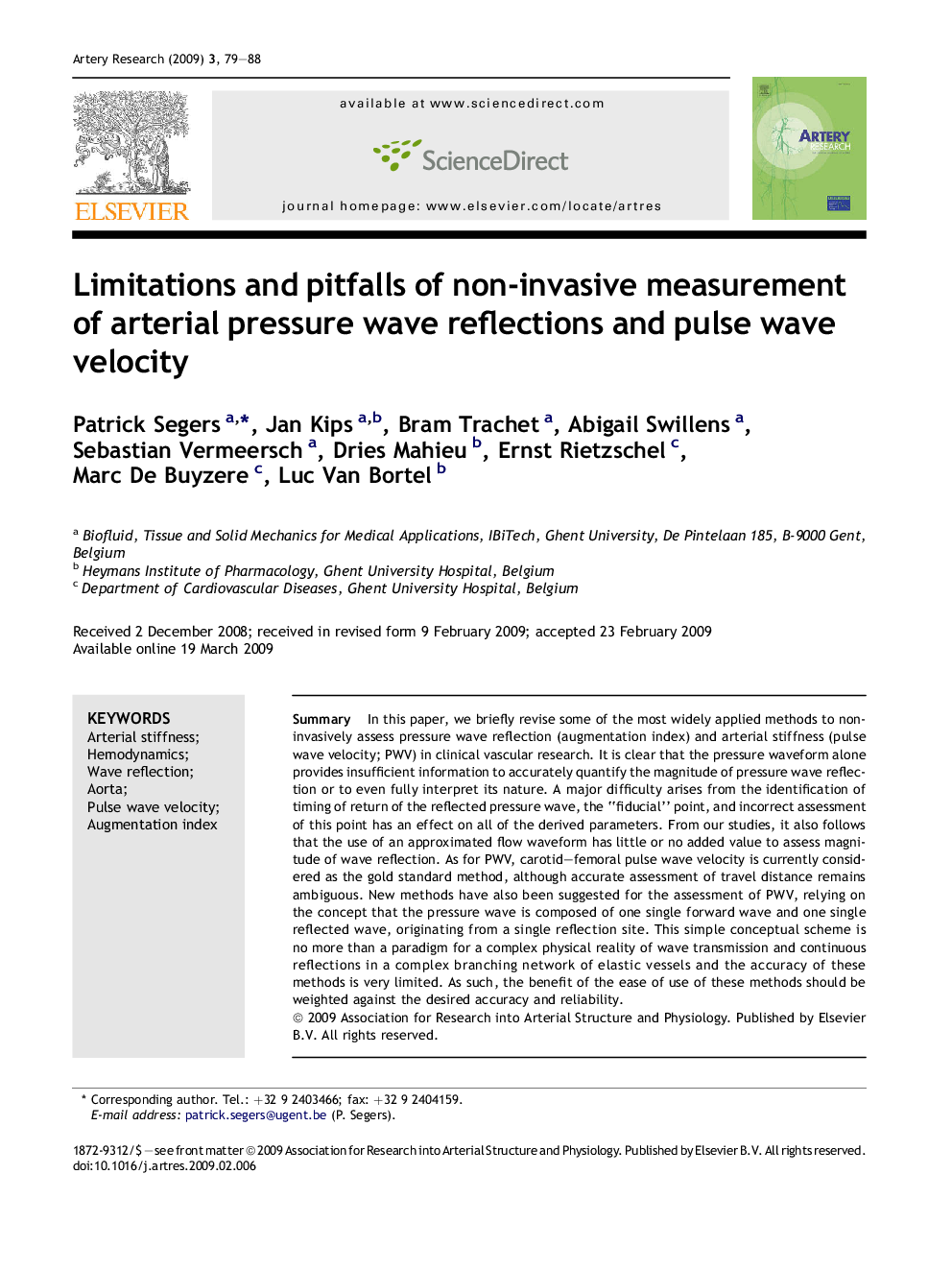| Article ID | Journal | Published Year | Pages | File Type |
|---|---|---|---|---|
| 2891957 | Artery Research | 2009 | 10 Pages |
SummaryIn this paper, we briefly revise some of the most widely applied methods to non-invasively assess pressure wave reflection (augmentation index) and arterial stiffness (pulse wave velocity; PWV) in clinical vascular research. It is clear that the pressure waveform alone provides insufficient information to accurately quantify the magnitude of pressure wave reflection or to even fully interpret its nature. A major difficulty arises from the identification of timing of return of the reflected pressure wave, the “fiducial” point, and incorrect assessment of this point has an effect on all of the derived parameters. From our studies, it also follows that the use of an approximated flow waveform has little or no added value to assess magnitude of wave reflection. As for PWV, carotid–femoral pulse wave velocity is currently considered as the gold standard method, although accurate assessment of travel distance remains ambiguous. New methods have also been suggested for the assessment of PWV, relying on the concept that the pressure wave is composed of one single forward wave and one single reflected wave, originating from a single reflection site. This simple conceptual scheme is no more than a paradigm for a complex physical reality of wave transmission and continuous reflections in a complex branching network of elastic vessels and the accuracy of these methods is very limited. As such, the benefit of the ease of use of these methods should be weighted against the desired accuracy and reliability.
